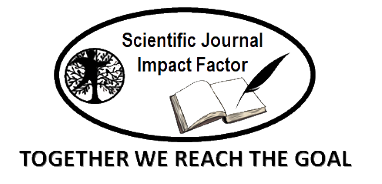THE COMMON PRONUNCIATION ERRORS THAT MADE BY LIBYAN STUDENTS STUDYING ENGLISH LANGUAGE
Keywords:
Pronunciation errors, vowel sounds, consonant sounds, Derna UniversityAbstract
This research examines prevalent mistakes in the English vowel and consonant sounds of pronunciation among undergraduate Libyan students majoring in English for the year 2022-2023. The sample consisted of ten second- and third-year students from the English department of Derna University, who had already taken a pronunciation class. Students were selected based on their completion of an English department course titled Pronunciation. This is qualitative research which describes observation and audio recordings of students pronouncing words and direct observations as well as recorded audio as the students’ session. The results indicated a high frequency of word and sentence articulation errors. Students in the sample struggled to produce vowel sounds with 150 incorrect pronunciations recorded, as opposed to 75 instances of erroneous consonant pronunciations. These findings help clarify some of the phonological problems English is perceived as or taught to be and provides guidance towards resolving them
References
1. Ahmed, J. (2011). Pronunciation problems among Saudi learners: A case study at the Preparatory Year Program, Najran University, Saudi Arabia. Language in India, 11(7).
2. Altaha, F. M. (1995). Pronunciation errors made by Saudi university students learning English: Analysis and remedy. ITL: Institut voor Toegepaste Linguistiek, 109(10), 110–123.
3. Ambalegin, & Suryani, M. S. (2018). Mother Tongue Affecting the English Vowel Pronunciation of Batak Toba Adults. In The 1st Annual International Conference on Language and Literature (AICLL 2018) (pp. 78–86). KnE Social Sciences.
4. Avery, P., & Ehrlich, S. (1992). Teaching American English pronunciation. Oxford: Oxford University Press.
5. Binturki, T. A. (2008). Analysis of pronunciation errors of Saudi ESL learners (Master’s thesis). Southern Illinois University at Carbondale.
6. Bishop, D. V., & Snowling, M. J. (2004). Developmental dyslexia and specific language impairment: Same or different? Psychological Bulletin, 130(6), 858.
7. Brown, H. D. (1980). Principles of language learning and teaching. Prentice Hall.
8. Brown, H. D. (2000). Principles of language learning and teaching (4th ed.). Longman.
9. Brown, H. D. (2005), & Madalis, H. (1995). [As cited in Natalia Anggrarini & Lulu Istiqomah, An analysis of pronunciation errors of English consonant sounds produced by English department students, University of Wiralodra].
10. Brown, P., & Levinson, S. C. (1978). Universals in language usage: Politeness phenomena. In Questions and politeness: Strategies in social interaction (pp. 56–311). Cambridge University Press.
11. Corder, S. P. (1967). The significance of learners’ errors. International Review of Applied Linguistics in Language Teaching (IRAL), 5(1–4), 161–170.
12. Corder, S. P. (1974). Error analysis. London: Longman.
13. Dalton, C., & Seidlhofer, B. (1994). Pronunciation. Oxford University Press.
14. Dalton, D. (2002). Some techniques for teaching pronunciation. http://iteslj.org/Techniques/Dalton_Pronunciation.html
15. Derwing, T. (2003). What do ESL students say about their accents? Canadian Modern Language Review, 59(4), 547–567.
16. Dulay, H. (1982). Language two. Oxford University Press.
17. Flege, J. E., Munro, M. J., & MacKay, I. R. (1995). Factors affecting strength of perceived foreign accent in a second language. The Journal of the Acoustical Society of America, 97(5), 3125–3134.
18. Fries, C. C. (1945). Teaching and learning English as a foreign language.
19. Fromkin, V., Rodman, R., & Hyams, N. (2011). An introduction to language (9th ed.). Canada: Wadsworth Cengage Learning. http://dinus.ac.id/repository/docs/ajar/intro_to_lang_fromkin.pdf
20. Gilakjani, A. P. (2011). A study on the situation of pronunciation instruction in ESL/EFL classrooms. Journal of Studies in Education, 1(1), 1–15.
21. Hameed, P. F. M., & Aslam, M. S. (2015). Pronunciation as a stumbling block for the Saudi English learners: An analysis of the problems and some remedies. Theory and Practice in Language Studies, 5(8), 1578–1583.
22. Hashemian, M., & Soureshjani, K. H. (2011). The interrelationship of autonomy, motivation, and academic performance of Persian L2 learners in distance education contexts. Theory and Practice in Language Studies, 1(4), 319–326.
23. Islamiyah, M. (2012). Error analysis of English sound produced by English learners: The influence of transfer. Leksika, 6(1), 1–9.
24. Jahan, N. (2011). Teaching and learning pronunciation in ESL/EFL classes of Bangladesh. Journal of Education and Practice, 2(3), 36–45.
25. Kelly, D. (2004). A handbook for translator trainers: A guide to reflective practice. St. Jerome Publishing.
26. Kharma, N. N., & Hajjaj, A. H. (1989). Use of the mother tongue in the ESL classroom.
27. Krashen, S. D. (2013). Second language acquisition: Theory, applications and some conjectures. Cambridge: Cambridge University Press.
28. Lado, R. (1957). Linguistics across cultures. Ann Arbor: University of Michigan Press.
29. Low, E. L. (2015). Pronunciation for English as an international language (1st ed.). New York: Routledge.
30. Macmillan, D. (2011). Lungs. Oberon Modern Plays.
31. McMahon, A. (2020). An introduction to English phonology. Edinburgh: University Press Ltd.
32. Nunan, D. M., & Carter, R. (Eds.). (2001). The Cambridge guide to teaching English to speakers of other languages. London: Ernst Klett Sprachen.
33. Otlowski, M. (1998). Pronunciation: What are the expectations? The Internet TESL Journal, 4(1), 115–129.
34. Pourhosein Gilakjani, A. (2016). What factors influence the English pronunciation of EFL learners? Modern Journal of Language Teaching Methods, 6(2), 314–326.
35. Pulston, C. B., & Burder, M. N. (1976). Teaching English as a second language: Techniques & procedures. Cambridge: Winthrop Publishers, Inc.
36. Richards, J. C., & Schmidt, R. (2002). Longman dictionary of language teaching and applied linguistics. Pearson Education Limited.
37. Roach, P. (2012). English phonetics and phonology: A practical course (4th ed.). Cambridge University Press.
38. Selinker, L. (1972). Interlanguage. International Review of Applied Linguistics in Language Teaching, 10(1-4), 219–231.
39. Scarcella, R. C., & Oxford, R. L. (1994). Second language pronunciation: State of the art in instruction. System, 22(2), 221–230.
40. Yates, L., & Zielinski, B. (2009). Give it a go: Teaching pronunciation to adults. Sydney, Australia: AMEP Research Centre. http://www.ameprc.mq.edu.au/resources/classroom_resources/give_it_a_go
41. Yostanto, A. M. (2007). A study of English phonological errors produced by English department students of Petra Christian University (Doctoral dissertation, Petra Christian University).
42. Yule, G. (2014). The study of language (5th ed.). New York: Cambridge University Press.
43. Zimmermann, L. (2004). Teaching pronunciation: A specialist approach. In Davidson, P., Al-Hamly, M., Khan, M., Aydelott, J., Bird, K., & Coombe, C. Proceedings of the 9th TESOL Arabia Conference: English language teaching in an IT age (Vol. 8).



























